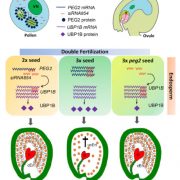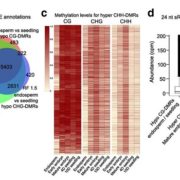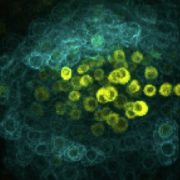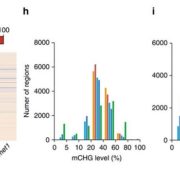Variegated Canvases: The Diverse World of Plant Shoot Stem Cells
Bradamante et al. investigate the heterogeneity of stem cells of the shoot apical meristem
https://doi.org/10.1093/plcell/koad295
By Vu Nguyen, Gabriele Bradamante, Ortrun Mittelsten Scheid and Ruben Gutzat
Background: In plants, stem cells in the shoot apical meristem (SAM) produce new organs such as leaves and flowers. Transposons are parasitic, self-replicating genetic elements and evolutionary theory predicts that transposons are active in stem cells, allowing them to be transmitted to the next generation. Transposon activity can damage the cell’s genome and therefore, plants also deploy cellular defenses against the propagation of transposons. Among these defenses are epigenetic mechanisms involving ARGONAUTE (AGO) proteins and small RNAs, with AGO5 and AGO9 showing high abundance in SAM stem cells.
Question: This study delves into the roles of AGO5 and AGO9 throughout plant development, particularly their potential in safeguarding meristem cells from transposon activity.
Findings: Investigating AGO5 and AGO9 expression through various stages of plant development, the study unveils surprising dynamics within SAM stem cells, especially in the subepidermal layer, which provides the progenitors for reproductive cells. These cells also exhibit heightened activity of potentially dangerous transposons. Furthermore, these transposons are processed into small RNAs by the cell and loaded onto AGO5 and AGO9. This resembles a genomic conflict between the host genome and transposons, similar to observations in animal reproductive cells. This is also evidence for the presence of a specialized group of reproductive cells within the meristem from an early developmental stage.
Next step: These insights into the variability of SAM stem cells pave the way for in-depth research on transposon behavior and gene control within these cells. Future studies could extend to examining transposon control through generations, particularly under environmental stresses like elevated temperatures.
Reference:
Gabriele Bradamante, Vu Hoang Nguyen, Marco Incarbone, Zohar Meir, Heinrich Bente, Mattia Donà, Nicole Lettner, Ortrun Mittelsten Scheid, Ruben Gutzat (2024) Two ARGONAUTE proteins loaded with transposon-derived small RNAs are associated with the reproductive cell lineage in Arabidopsis https://doi.org/10.1093/plcell/koad295










